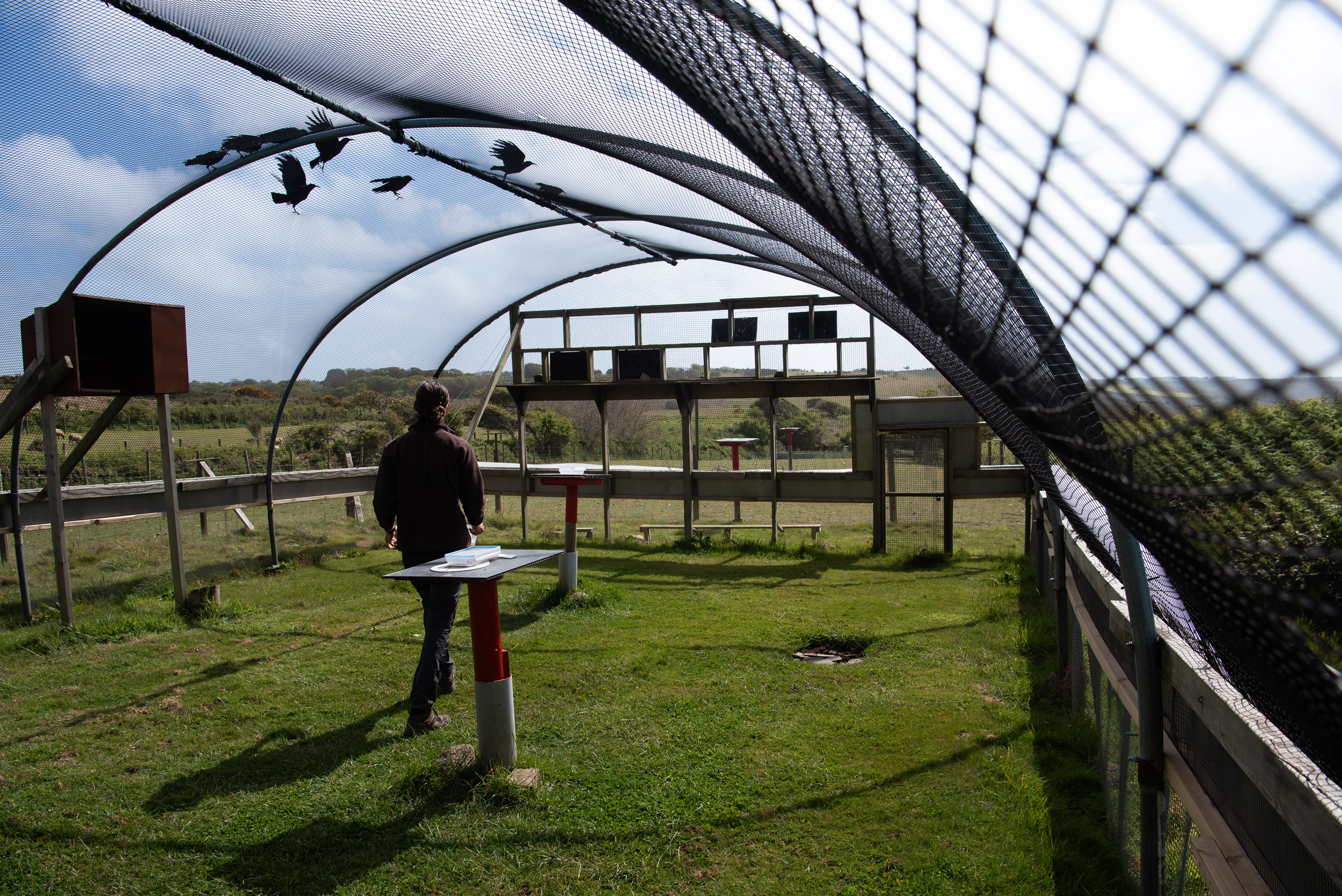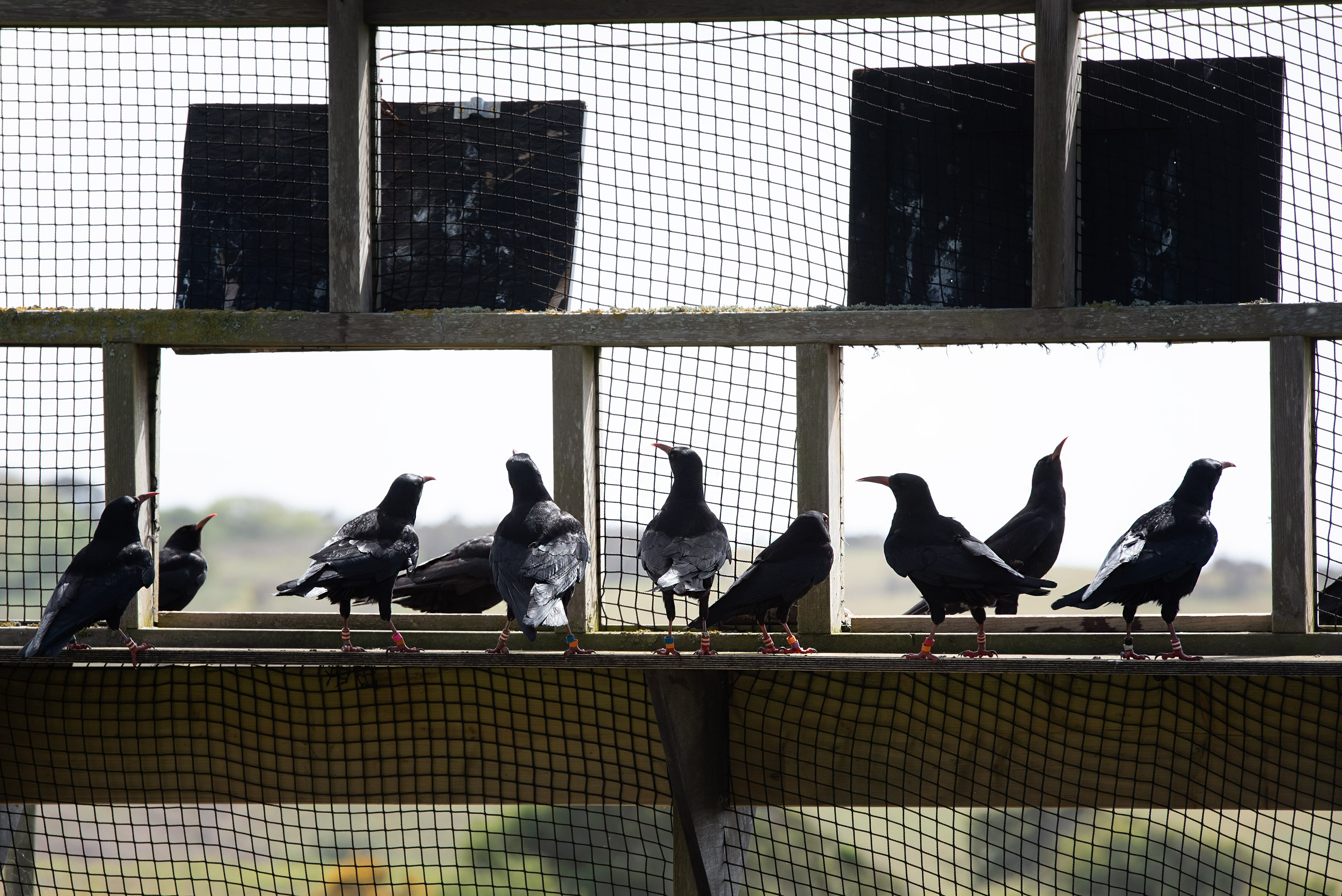


Between 2013 and 2018, captive-bred choughs were soft-released in small cohorts replicating normal family group size.
The plan was to release chicks shortly after fledging although sub-adults (< 4 years old) were used for the first release. Captive breeding at Jersey Zoo was not successful until 2014.
Cohorts acclimatized and socialized in the release aviary for a minimum of 2 weeks and trained to associate a whistle with food, enabling staff to call birds back to the aviary if needing re-capturing. Each cohort was initially given a set amount of time outside then called back in for food and confined until the next release. Duration outside increased day by day until reaching full liberty. Staff followed any bird that failed to return attempting to lure it back if feasible. If it had gone to roost, staff would return at sunrise to retry.
All birds were fitted with leg rings. Tail-mounted VHF transmitters were fitted to all birds released between 2013 and 2016. Initially, they received three supplemental feeds a day, as in captivity, reducing to once a day. This continues to the present day permitting close monitoring.
Jersey Zoo’s Veterinary Department conducted pre-and post-release faecal screening to monitor parasite levels, administer wormer if necessary, and have also treated physical injuries.
- Dedicated staff willing to go above and beyond for the species.
- Supportive public with a means and willingness to report sightings away from the release site
- Jersey Zoo has its own veterinary department with expertise in avian medicine and experience of working with the species.
- VHF tracking had limitations. GPS technology was not available for the species at the time. With regards to dispersal data, staff were often more reliant on public sightings than VHF tracking methods. However, VHF tracking was invaluable when locating missing individuals recently released. The team were able to locate birds and provide supplemental feed or on one occasion recover a dead bird allowing vets to carry out a post-mortem.
- Supplemental feeding should continue post-release to support the population during times of limited wild food availability. Survival rates were high during the release phase. Losses were attributed to starvation when the individual could not access supplemental feed.
- Greater success is achieved by releasing choughs under six months of age.
- Individuals reared alone without siblings are more likely to fail in the wild even if parent-reared in captivity.
- Adaptive management is key. Have a plan but be prepared to deviate in reaction to the species needs.